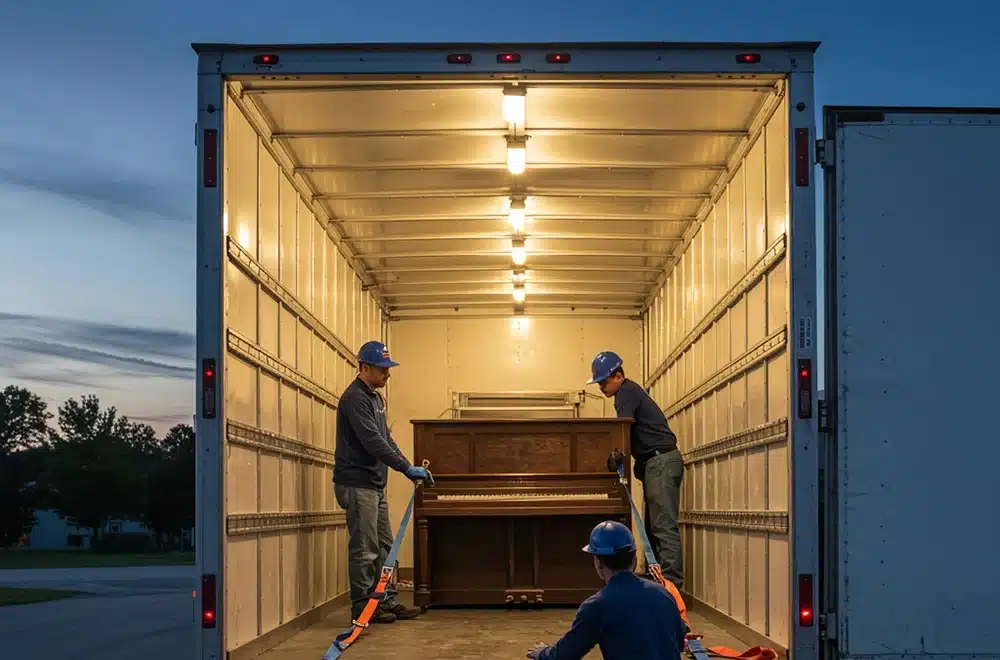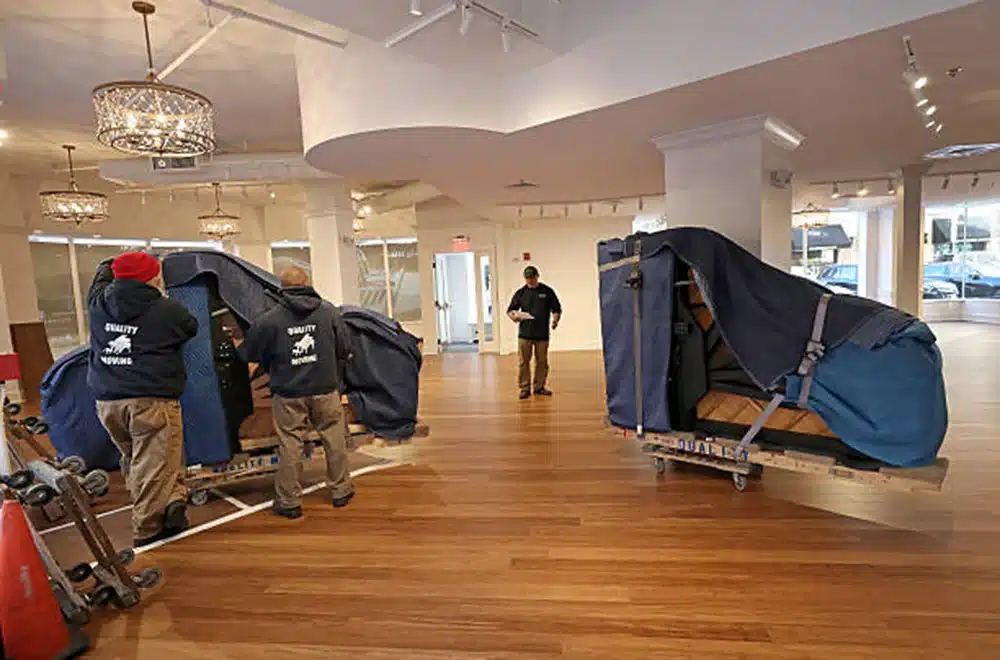Moving a piano is already challenging, but the complexity increases when tight spaces are involved. Pianos are large, heavy, and delicate instruments that need proper care to prevent damage during a move. Narrow hallways, small elevators, and tight staircases can make moving a piano even more complicated. Our professionals understand the unique challenges of moving pianos in confined areas. They use specialized tools and techniques to safely maneuver these large instruments, ensuring that the piano and property remain undamaged. This requires not just brute strength but also a good understanding of the piano’s structure and the space constraints involved.
Our team can move pianos through even the tightest spaces efficiently by focusing on careful planning, proper evaluation, and using the correct equipment. This article will walk you through how our professionals handle these tricky moves, covering everything from initial evaluation to the final placement of the piano in its new location. Understanding these steps helps you appreciate the expertise required to move a piano safely in confined spaces.
Assessing the Space: Initial Evaluation for Safe Piano Moves
Before moving a piano, it’s crucial to assess the space. This initial evaluation helps us understand the challenges we might face. First, we measure the width and height of doorways, hallways, and staircases. Knowing these dimensions lets us plan the best route for moving the piano. For example, tight corners might require us to tilt the piano, so knowing the available space helps us prepare.
Next, we examine any obstacles that could complicate the move. This includes furniture, light fixtures, and railings that might get in the way. Identifying these obstacles early on helps us decide whether they need to be moved or protected to avoid damage. Our goal is to create a clear path to make the move as smooth as possible.
Thoroughly assessing the space can help us plan a safe and efficient move. This initial step is essential for minimizing risks and ensuring that the piano and the property remain undamaged. It also helps us decide on the specialized tools and techniques needed for the job.
Specialized Tools and Techniques for Tight Spaces
When moving a piano in tight spaces, specialized tools are often required. One of the most useful tools is a piano dolly. Dolly carts help us move the piano while keeping it stable. For narrow hallways and tight corners, we use furniture sliders to glide the piano smoothly over floors without causing damage.
In addition to tools, specific techniques are essential. For instance, lifting straps help us distribute the piano’s weight evenly, making it easier to carry through tight spaces. These straps also help us maintain a good grip to prevent slipping. Another technique is tilting the piano when moving it around corners. This method requires precision to avoid harming the piano or the walls.
We also use padding and protective covers to shield the piano from scratches and dents. Combining these tools and techniques ensures the piano is safely moved, even in the most confined areas. This careful approach protects the piano and the property, making the move successful and stress-free.
Step-by-Step Process for Moving Pianos in Confined Areas
Moving a piano in tight spaces requires a series of careful steps. First, we disassemble any removable parts, such as the legs, pedals, and music stand. This step makes the piano easier to maneuver and reduces the risk of damaging these delicate components. We use padding to protect all removed parts, ensuring they stay safe during the move.
Once the piano is ready, we prepare the path. This involves clearing any obstacles and placing protective covers on floors and walls to prevent scratches. If the piano needs to go through tight corners or narrow doorways, we often tilt it slightly to fit. This requires precise coordination among team members to keep the piano balanced and avoid hitting walls.
We then use specialized equipment like dollies and lifting straps to carefully move the piano. Each team member has a specific role to ensure a smooth process. After navigating through tight areas, we reassemble the piano at its new location, making sure all parts are securely attached and the piano is level.
Safety Measures and Best Practices for Moving Pianos in Tight Spaces
Safety is our top priority when moving pianos, especially in tight spaces. One essential safety measure is wearing protective gear, such as gloves and sturdy shoes, to prevent injuries. Our team members are trained to lift properly, using their legs instead of their backs to reduce the risk of strain.
In tight spaces, communication is key. We make sure everyone involved in the move knows their roles and understands the plan. Clear verbal cues help us coordinate movements and avoid accidents. We also take frequent breaks to avoid fatigue, which can lead to mistakes.
Another best practice is using plenty of padding and protective coverings. This protects both the piano and the surroundings. We also double-check measurements and clearances before moving the piano, ensuring there’s enough space to move safely. Following these safety measures and best practices minimizes risks and ensures a successful move.
Hire Professional Piano Movers in Houston
Moving a piano in tight spaces presents unique challenges, but it can be done safely and efficiently with careful planning and the right techniques. From assessing the space and using specialized tools to following a detailed step-by-step process and prioritizing safety, each part of the move requires skill and precision.
At Piano Movers of Houston, our team is dedicated to making your piano move as smooth as possible. We handle every aspect carefully, ensuring your piano arrives in perfect condition. Trust our Houston piano movers and experience the difference that professional handling can make. Contact Piano Movers of Houston today to schedule your move and ensure your piano is in the best hands.
Related Posts

Preparing Your Piano for a Move: What Professionals Do Before It Leaves

Move Your Piano in a Climate-Controlled Transport: Why It Matters
